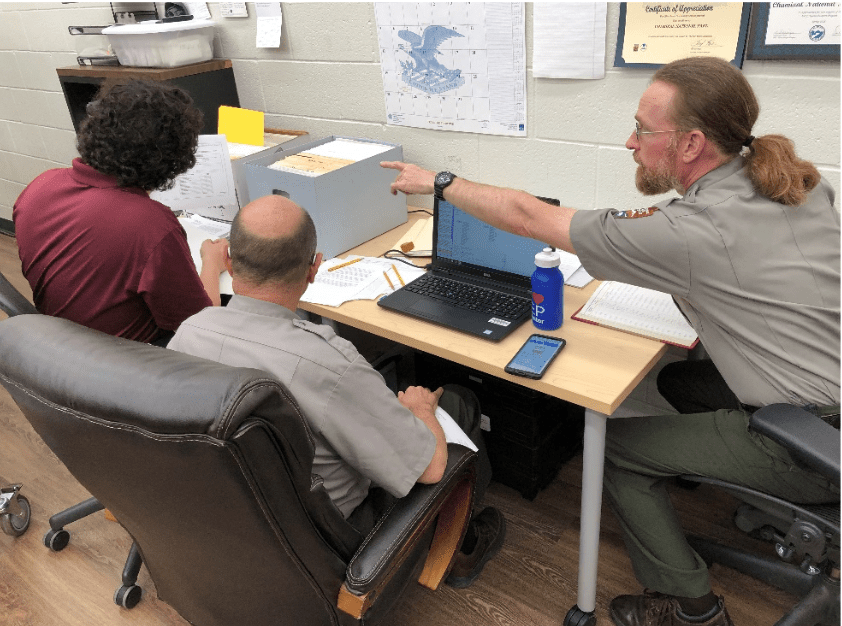By Juan Davila
In this past week, we have worked solely on the Annual inventory of CHAM. Our team leader, Mark Calamia, asked for the help of Rodney Souter a conservator in Chamizal to help us on the process and teach us along the way. After a meeting and being briefed on what encompasses an Annual inventory and the 3 parts that separate the workload. The Annual Inventory is done every year, although I was told before it was done every 3 years in the NPS. It consists of three lists: Controlled Items,
Randomized Items and Accessioned items.
Once we had been briefed and given a reminder for how to handle and take care of the possible items we would find, we headed over to the vault and moved out all the big objects so that we could walk with ease. Along with my team, we prepared our cotton gloves and started to look for the items. Controlled inventory was fast, since ICMS picked only paintings, and they were easy to find in the racks.
The randomized inventory was a whole other adventure that took us two days to complete. The items were stored in several locations and somewhere on the warehouse that I had mentioned in my previous blog. My team was very grateful that we had taken time in the summer to organize the warehouse because if not the random object would have been an even bigger task. We found many interesting objects, including a ring from U.S. President Lyndon B. Johnson. LBJ’s daughter gifted the ring to Chamizal because she felt it would honor her father and wanted it to be exposed in an exhibit of the Memorial. I also found correspondence between U.S. President John F. Kennedy and Mexican President Lopez Mateos concerning the treaty of Chamizal and the conversation that followed between Lopez Mateos and Lyndon B. Johnson after Kennedy’s assassination.
After we finished the randomized items list, we passed over to the non-accessioned items. This list was a headache because they had been wrongfully registered in the past. Instead of archival collections, each page or flyer was cataloged as its own item. To make it worst most items had inconsistent descriptions and we discovered many had the description of a different object. Most of the items were flyers or pamphlets from recitals or pianos. I got to see several flyers from the early 60’s promoting black face plays. This was shocking to me, I had read and seen them in class but once I saw the art in the posters, I could comprehend how atrocious those plays were. This week was a great learning experience. I gained valuable skills and knowledge from my peers and had a lot of fun finding objects in the vault. I never expected I would find random pamphlets and signed documents from presidents.


